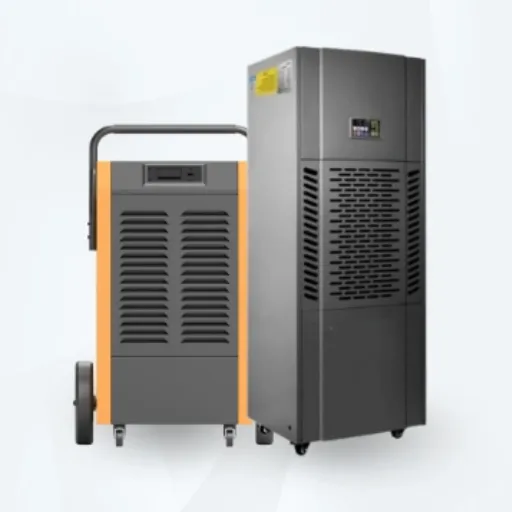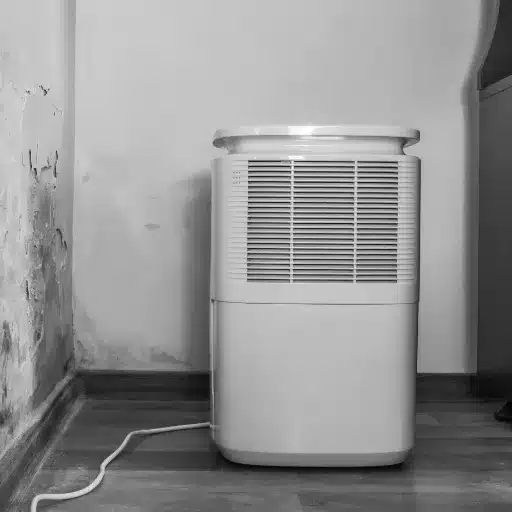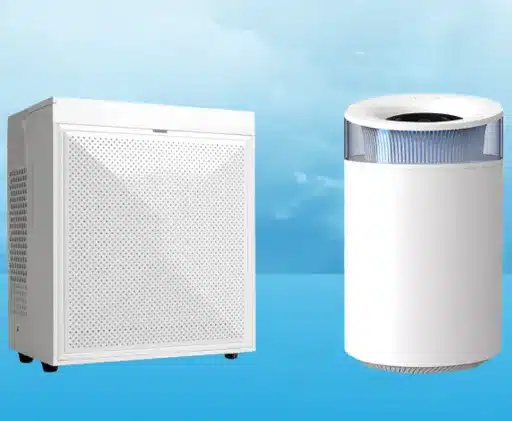Understanding the Need for a Dehumidifier
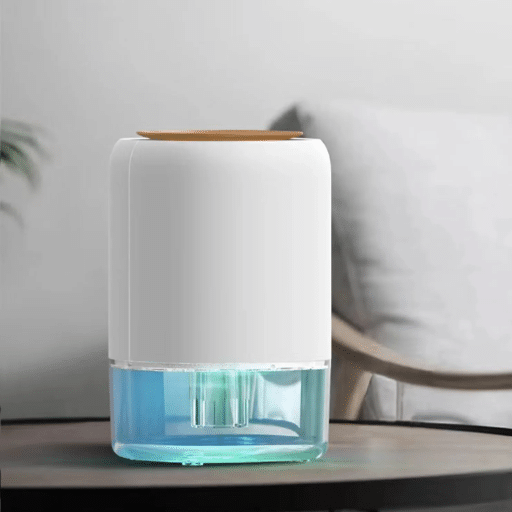
During snow and excessive rain, youngsters are barred from getting outdoors for fresh air. Winter air tends to get humid and, therefore, very moist. The presence of excessive humidity in the indoor ambience can lead to mold growth, mildew, and dust mite problems, all considered detrimental to air quality and human health. Your dehumidifier will reduce humidity to the comfortable level of between 30 and 50 percent to benefit your health. These devices are useful where humidity seems to be excessive, such as in basements or bathrooms. Dehumidifiers in winter keep the environs of a home damp-free, protect homes/measures from moisture damage, and improve overall comfort.
Why Use a Dehumidifier in Winter?
Using dehumidifiers in winter is a must if one wishes to keep the indoor air comfortable and healthy. High levels of humidity inside during cold days cause condensation on windows, walls, and ceilings, providing the perfect conditions for mold and mildew to develop. Mold destroys surfaces and creates more health risks; it might cause allergies or respiratory problems. Recently, trends have shown increased searching for terms such as “how to prevent moisture in winter,” which is indicative of the growing awareness of this phenomenon. A dehumidifier can effectively remove excess moisture and balance humidity to the levels of 30-50 percent, which is considered suitable for preventing moisture-related problems. Also, by lowering humidity it protects one’s furniture, flooring, and home structure from damage caused by water; it also helps to improve air quality and comfort during winter.
Key Benefits of Winter Dehumidification:
- Prevents mold and mildew growth
- Reduces condensation on windows and walls
- Protects furniture and flooring from moisture damage
- Improves air quality and respiratory comfort
- Maintains structural integrity of your home
Effects of High Humidity Levels
Increased humidity levels can severely affect one’s health and living conditions. With more moisture in the air, surfaces become a breeding ground for mold, mildew, and dust mites, all of which can induce allergies and respiratory conditions in persons. The concern is further backed by data from Google suggesting increased search interest in terms such as “symptoms of mold exposure” and “humidity and respiratory problems.” Moreover, humidity causes structural damages like paint peeling, wood warping, and foundation weakening on the prolonged exposure. Thus, controlling indoor humidity is instrumental in maintaining a healthy living environment and averting further detrimental consequences.
Indoor Air Quality During Winter Months
During the winter, reduced ventilation, increased heating use, and changes in humidity often conspire to degrade indoor air quality. Google’s search engine data attests to this with increasing search numbers for terms like “indoor air quality in winter” and “how to improve air circulation during cold weather. To enhance air quality, owners can take a few measures like installing and running air purifiers, allowing fresh air inside even if the temperature is cold, and keeping track of humidity levels using a hygrometer. According to search trends and environmentalists, the main thing is to keep a balance between moisture and adequate air movement to reduce pollutants and keep mold along with respiratory discomfort away.
Using a Dehumidifier in Your Basement
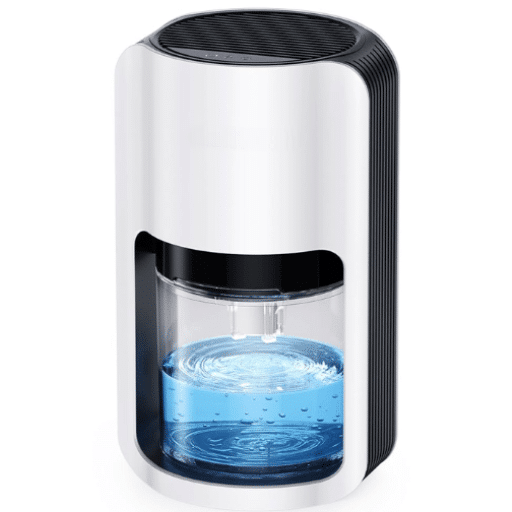
Using a dehumidifier in your basement is a great way of removing excess moisture and maintaining acceptable humidity levels. Because of their location and poor ventilation, basements tend to hold moisture; this can be conducive to mold formation and air quality degradation. According to a recent report generated from Google’s search engine, many homeowners are seeking solutions to prevent these problems and to improve their indoor air quality. A dehumidifier extracts extra moisture in the air, keeping the humidity within 30% and 50% as recommended. This not only inhibits mold growth but also questions respiratory discomfort and safeguards your home’s structural integrity. For maximum effectiveness, place the dehumidifier conspicuously in the center of your basement; it should be well sized for your application; and empty the water tank regularly or hook it to a drainage system for continuous operation.
Importance of Humidity Control in the Basement
Maintaining basement humidity levels helps in preserving the structure of the house and improving the overall indoor air quality. High humidity levels cause mold, dust mites, and foul odors—mainly types of things that endanger your health and despoil your belongings in the space. Per Google data trends, as also recently documented, searches for how to prevent mold in basements and solutions for basement humidity problems have skyrocketed, implying concerns are widespread about the issues. Formation of a well-functioning dehumidifier and regular humidity checks will spare you from heavy costs in repairs and help to make a healthier environment. Basement humidity control plays a key role when it comes to comfort and preservation of the property.
Basement Dehumidifier Placement Tips:
- Position in the center of the basement for optimal air circulation
- Ensure the unit is properly sized for your space
- Empty water tank regularly or use continuous drainage
- Keep away from walls to allow proper airflow
Preventing Mold and Mildew in Winter
Good ventilation and moisture control in the house and in areas vulnerable to dampness like basements remain the best mold and mildew preventive measures during winter. Information from Google trends shows that many are searching for how to hold moisture in control, endorsing the use of a dehumidifier to keep indoor-level humidity below 50%. Besides, sealing of cracks, insulation, and fixes for any leakages are steps that need equal consideration. Further, cleaning and regular inspection of potential sites will stop moisture territory for mold and mildew. Together, these measures can virtually wipe out mold risks during colder times for any homeowner.
Choosing the Right Basement Dehumidifier
Several aspects should be taken into consideration before choosing a suitable basement dehumidifier in order to determine the most appropriate solution for your requirements. Using the latest search engine data from Google, it is evident that homeowners mainly search for a dehumidifier that merges efficiency, capacity, and energy-saving features. Such units in large basements should ideally have a higher capacity, like one that removes 50 to 70 pints of moisture per day. Since these dehumidifiers maintain optimum performance while minimizing energy consumption, they are highly favored as green options. Furthermore, added conveniences incorporate automatic continuous drainage pump, adjustable humidity settings, and an automatic shut-off function. Additionally, reading the reviews will guide you to purchase one that has consistently ranked high across brands, such as hOmeLabs, Frigidaire, or Ivation. Remember that a good option would be one that keeps moisture under control in your home while promoting a good living environment for the family.
| Basement Size | Recommended Capacity | Key Features to Look For |
|---|---|---|
| Small Basement (up to 1,000 sq ft) |
30-40 pints/day | Auto shut-off, adjustable settings |
| Medium Basement (1,000-1,500 sq ft) |
50 pints/day | Continuous drainage, ENERGY STAR certified |
| Large Basement (1,500+ sq ft) |
70+ pints/day | Built-in pump, digital controls, auto-defrost |
Operating Your Dehumidifier Efficiently
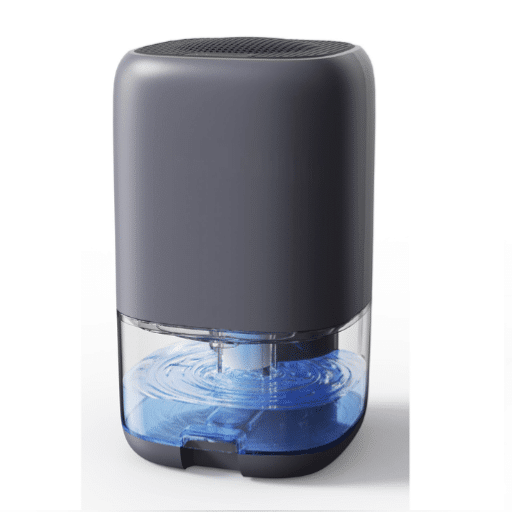
Put the dehumidifier in a spot with open air circulation, say, in the middle of the room, with a clear vent. Set the moisture in the air around 30-50%, an excellent range for comfort and also for the prevention of mold. Empty the water container regularly or choose continuous drainage for a no-fuss operation. Keep doors and windows closed while running a dehumidifier to increase efficiency and cut down in energy costs. You should also clean the filter once in a while for good air circulation and to keep the unit’s life span. Following these simple things will improve the performance of the dehumidifier and provide a comfortable, moisture-controlled environment for your home.
Best Practices for Running a Dehumidifier in Winter
The use of a dehumidifier during winter would help prevent dampness, counter occurring of mold, and maintain a healthier indoor environment. To make the most out of using your dehumidifier in winter, make sure that the room temperature does not reach below that level where most dehumidifiers work efficiently, which is 41°F (5°C). In very cold climates, you may want to consider getting a dehumidifier made for lower temperatures; models designed for low temperature will tend to have features such as auto-defrost to avoid freezing.
Set up the dehumidifier at a central spot, preferably somewhere that acts as a hub for maximum dampness, such as the basement or the bathroom. Remember to empty the water tank regularly or connect a continuous drainage line. Also, keep an eye on the humidity levels with a hygrometer, aiming for 30-50% humidity indoors in order to prevent over-drying. Combining this with proper maintenance such as filter cleaning and ensuring free airflow will certainly keep your indoor environment comfortable and protected from excessive moisture during the colder months.
Winter Operation Checklist:
- Ensure room temperature stays above 41°F (5°C)
- Choose models with auto-defrost for cold climates
- Position in central, high-moisture areas
- Monitor humidity with a hygrometer
- Maintain 30-50% indoor humidity
- Clean filters regularly
- Keep windows and doors closed during operation
Understanding Condensation Issues
Temperature Differences
Condensation usually takes place when warm, humid air meets a cold surface. It is particularly typical on windows, pipes, and poorly insulated walls.
High Indoor Humidity
When moisture in the air is excessive because of activities such as cooking, bathing, or drying laundry indoors, the chances of condensation problems increase.
Poor Ventilation
Bad ventilation does not allow moisture-laden air to be expelled so that humidity mounts and promotes condensation.
Seasonal Variations
Condensation increases during the cold months because cold air cannot hold moisture—the surface hence gets cool enough for vapor to condense rapidly.
Building Design and Insulation
Badly insulated or unsealed gaps may produce cold spots inside a building, encouraging condensation formation in weak areas.
HVAC Systems and Dehumidifier Compatibility

Proper considerations for HVAC-dehumidifier compatibility are necessary for achieving the best indoor air conditions and averting moisture accumulation. When properly coordinated, an HVAC system and a dehumidifier combine to establish temperature and humidity levels inside a building. Modern systems employ internal humidistats to maintain internal air at ideal humidity, but in cases of chronic humidity, the use of an additional standalone or whole-house dehumidifier will improve moisture management.
The latest trends indicate that one of the popular queries references whether installing a dehumidifier will stress the HVAC. The answer lies in good sizing and installation of the system; if the dehumidifier is properly sized for the space and is compatible with the HVAC system, it will actually relieve the system by not having to perform additional cooling as extensively to remove moisture. Compatibility checks require at least a capacity check between dehumidifier and HVAC airflow, as well as a ductwork check. Such consideration allows chancing of the dehumidifier to counterbalance the HVAC equipment’s natural wear, and with that, the HVAC system can confidently offer comfort unto the occupant while solving their humidity issues like mold or condensation.
HVAC Compatibility Checklist:
- Verify dehumidifier capacity matches space requirements
- Check HVAC airflow compatibility
- Inspect ductwork for proper integration
- Ensure proper sizing to avoid system stress
- Consider whole-house vs. standalone units
Maintaining Optimal Humidity Levels
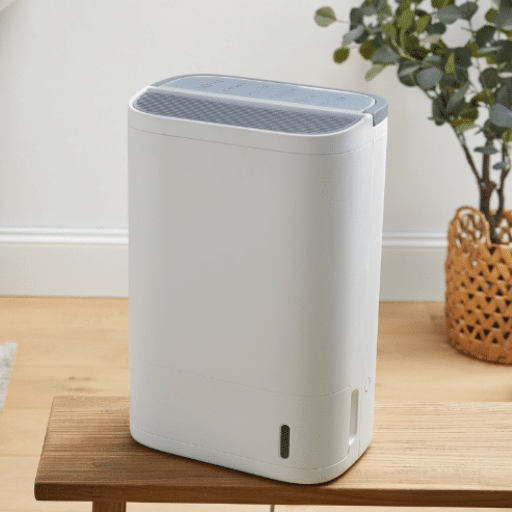
Ensuring optimal humidity conditions indoors is vital to comfort and health. Latest insights give the ideal indoor humidity as usually between 30% and 50%. When lower humidity prevails, it gives rise to dry skin, irritation, and respiratory problems, whereas higher humidity favors the growth of mold, mildew, and allergen activity. A well-maintained HVAC system paired with a dehumidifier to keep them in check is one choice. Rising concerns about indoor air quality are also reflected in search trends on Google, pointing towards the importance of balanced humidity for a healthier and comfortable living environment. Once maintenance is kept up and precise monitoring tools put in place, an occupant can ensure their ideal balance for their home or workspace.
| Humidity Level | Effects | Recommended Action |
|---|---|---|
| Below 30% | Dry skin, irritation, respiratory problems | Use humidifier to add moisture |
| 30-50% | Optimal comfort and health | Maintain current levels |
| Above 50% | Mold growth, mildew, allergen activity | Use dehumidifier to remove excess moisture |
Strategies for Keeping Your Home Comfortable
Based on the current data collected from Google’s search engine, the foremost condition for a comfortable home is attaining proper humidity levels and good air quality. Then, the question, “How to keep your home comfortable?” has some proposed answers. The first is to acquire a great smart thermostat, permitting the ability to precisely regulate temperatures that conform to their daily schedule for energy conservation and comfort. Second, air purifiers could be operative in conjunction with active ventilation to minimize allergens and contaminants; poor air quality is a big concern nowadays. Thirdly, integrate plants with known air-purifying abilities for both air purification and decorative purposes. The living environment can become both healthy and welcoming if one applies an amalgamation of technology, natural solutions, and maintenance in due course.
- Smart Thermostats: Precisely regulate temperatures for energy conservation and comfort
- Air Purifiers: Minimize allergens and contaminants in conjunction with ventilation
- Air-Purifying Plants: Natural air purification with decorative benefits
- Regular Maintenance: Keep all systems functioning optimally
Monitoring Humidity Levels Regularly
In regard to maintaining comfort and health, environment monitoring for humidity levels is essential. Humidity levels indoors should range from 30%-50% to prevent mold or respiratory ailments. Hygrometers accurately monitor humidity changes as per the latest information. If integrated with home automation, sensors for humidity report real-time updates and alert a response before correction occurs. A timely choice of retaining water with a dehumidifier during wet weather or adding moisture with a humidifier during drier periods keeps the balance. This means that, with constant monitoring and interventions, one can endeavor toward creating a sustainable and healthier environment within a livable space.
Ventilation Tips to Improve Indoor Air Quality
To guarantee a healthy indoor environment, ventilation is a must for resuspending and accumulating pollutants, allergens, moisture, etc. Begin with natural ventilation by routinely opening windows and doors to let fresh air circulate whenever weather permits. In rooms less accessible to fresh air, mechanical ventilation systems like exhaust fans should be installed to pull out stale air from kitchens and bathrooms. HEPA filters in an HVAC system are able to remove even very fine particles, thereby keeping the air clean inside. As per noted recent trends from Google search data, most homeowners have been searching for energy-efficient solutions such as energy recovery ventilators (ERVs) and heat recovery ventilators (HRVs) to enhance their indoor air while conserving energy. Building maintenance to include duct cleaning and filter replacement along with these systems makes for the optimal ventilation and indoor conditions.
- Natural Ventilation: Open windows and doors when weather permits
- Exhaust Fans: Install in kitchens and bathrooms to remove stale air
- HEPA Filters: Use in HVAC systems to remove fine particles
- ERVs and HRVs: Energy-efficient ventilation solutions
- Regular Maintenance: Clean ducts and replace filters regularly
References
-
Winter’s Coming: Tips to Lower Energy Bills – Northeastern University
This article discusses the use of dehumidifiers in winter and provides insights on energy efficiency and indoor air quality.
Visit the site -
Selecting a Dehumidifier – Cornell Cooperative Extension
A guide on choosing and using dehumidifiers, including their application in warm, damp winter climates.
Visit the site -
Factsheet: Keeping Homes Dry – Washington State University Energy Program
This factsheet provides advice on managing moisture in homes, including the role of dehumidifiers in preventing mold and mildew.
Visit the site
Frequently Asked Questions (FAQ)
Dehumidifier in Winter?
Wintertime use of the dehumidifier can indeed be beneficial, especially if one finds a home or an apartment in need of a little drying. The less amount of cold air bearing moisture results in lesser humid conditions outdoors, but this indoor air does become humid by the processes of cooking, bathing, and heating. The eventual use of the dehumidifier will exaggerate the levels of humidity that appear comfortable to anyone, preventing the build-up of mold and mildew.
When Do You Use a Dehumidifier?
You will use one when you notice some of the signs implied of high humidity in your home: condensation on the windows, musty odor, or visible moldiness. If winter seems sticky or muggy for you in your home, it is a sign you should be running the dehumidifier.
Can Dehumidifiers Make Your Indoor Air Quality Better?
Indeed! In fact, decreasing moisture levels via dehumidifier use keeps mold spores and mildew from growing. This is very important for people who have asthma or allergies because high moist air exacerbates their respiratory problems.
How Does Humidity Affect Your Basement?
This kind of high humidity can cause the basement to be a breeding ground for moisture problems. Therefore, if down under feels damp or musty, a basement dehumidifier in winter can really go a long way in keeping humidity levels in check and prevent further structural damages.
Is It Expensive to Run a Dehumidifier in Winter?
Some are cheaper; some are more expensive to run. Energy-efficient-looking schemes are more of a minimizer of such costs. Opting for a dehumidifier that has a high energy efficiency ratio (EER) is indeed the way to go, so you can dehumidify without worrying about your bills.
Should One Turn the Side Dehumidifier Off in the Winter?
If the home is high in humidity, it shouldn’t. Even with colder air outside, inside humidity can still be an issue. Run the dehumidifier while maintaining a comfortable and happier environment throughout winter.
How Can You Tell If You Need to Run Your Dehumidifier?
If any signs of high humidity go by your observation, say, condensation on windows, dampness, or musty smell, you should run your dehumidifier. Even keeping an eye on the relative humidity level in your home will give you enough clues to use your dehumidifier.
What Are the Benefits of Using a Dehumidifier During Heating?
When heating your house, a dehumidifier is able to make air drier and therefore more comfortable. This also prevents the formation of condensation on the windows and helps mitigate damage-related issues due to moisture in the house.
Do You Need to Ventilate While Using a Dehumidifier?
Indeed, a well-ventilated home will aid the dehumidifier with its work. Ventilation is required to exchange indoor air with air from outside, so that a balanced humidity level can be maintained and the overall quality of the indoor air improved.

